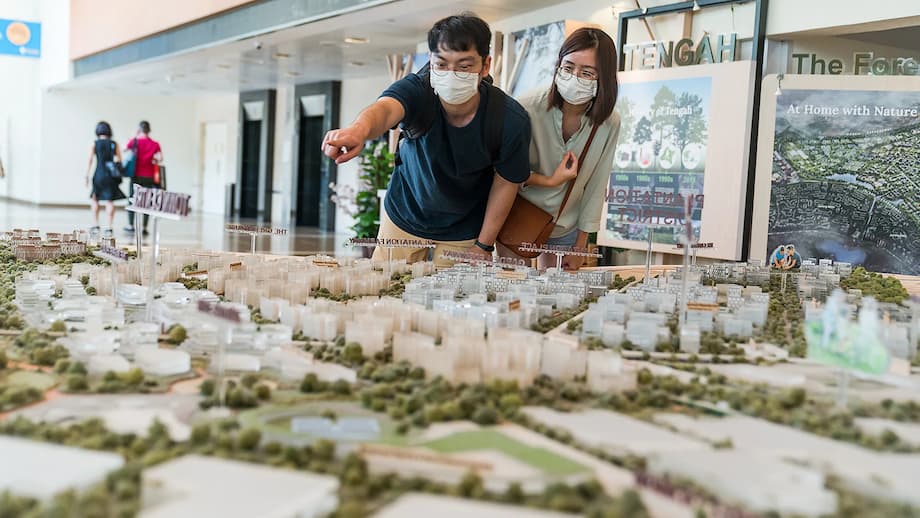Why shade now ranks among lifesaving urban infrastructure
Extreme heat is the most lethal climate hazard, claiming more lives each year than floods, hurricanes, and wildfires combined. Cities carry a double burden. Dense development replaces trees and soils with asphalt and concrete, which soak up solar radiation in the day and release it at night. This urban heat island effect raises temperatures and reduces nighttime cooling, which strains bodies and power grids. In tropical Singapore, heat and humidity are constants, and the city has warmed faster than the global average over the past several decades. That is why shade is treated as essential infrastructure rather than an afterthought.
- Why shade now ranks among lifesaving urban infrastructure
- Singapore’s early start with shade in its street DNA
- How rules turned shade into a formal network
- Trees and structures together, what the science shows
- Designing for breezes, cool materials, and district systems
- Greening at scale, from roadside canopy to nature corridors
- Equity and access to shade
- What other cities can copy, even with different budgets
- Challenges and trade offs
- Key Points
Comfort in hot weather depends on more than the number on a thermometer. Sun exposure drives radiant heat load, the invisible energy that turns a warm day into a punishing one. Reducing that radiation with tree canopy or a roof over a walkway lowers skin and surface temperatures, slows dehydration, and helps the body regulate heat. Engineers and biometeorologists use measures such as physiological equivalent temperature to capture how conditions feel to people. By that yardstick, smart shade can make the difference between a tolerable walk and a dangerous one.
Singapore has built a city where shade is not left to chance. Pedestrian routes often connect through covered walkways and arcades. Public spaces usually include big trees. Tall buildings are sited to throw shadows that fall where people gather. The approach took shape over two centuries and was renewed in the post independence era with a clear goal, safe outdoor activity in a hot climate.
Singapore’s early start with shade in its street DNA
The habit of planning for shade dates to the early nineteenth century, when Singapore’s colonial town plan required a continuous sheltered path in front of shophouses. These arcaded sidewalks, known locally as five foot ways, created a public passage protected from equatorial sun and sudden rain. The simple idea made walking viable in a climate where exposure can be punishing within minutes.
After independence, the city state doubled down on this logic. The government rebuilt the urban fabric with climate comfort in mind. New public housing blocks often stood on open ground floors that allow breezes to pass through. Agencies added metal canopies over sidewalks to create continuous shade between bus stops, stations, and commercial clusters. Today there are roughly 200 kilometers of covered walkways stitching together daily destinations, making shade a feature of everyday mobility rather than a luxury.
Political leaders treated greenery as infrastructure. Tree planting became a national project, backed by regulations and long term maintenance. The result is a mature urban forest that cools streets, softens glare, and brings down surface temperatures. Even in busy districts, big crowns reach over pavement and medians. The visible message is clear, you can walk here without baking in the sun.
How rules turned shade into a formal network
Singapore did not rely on sporadic planting or small pilot projects. Codes and incentives made shade part of standard development practice. Developers are required to provide pedestrian overhangs or colonnades along key frontages, and to connect sheltered paths to transport nodes. Outdoor plazas and seating areas are assessed for shade provisions, which can come from trees, canopies, or building shadows. A common benchmark is that at least half of a public outdoor area should be shaded in the day, a simple rule that keeps spaces usable rather than decorative.
Urban design reviews treat shade as a public good. In many cities, new towers must step back to preserve sunlight at street level. Singapore permits and even encourages strategic shadows if they fall on sidewalks, bus interchanges, and plazas, where they deliver comfort to thousands of people. The point is not to darken a city, it is to put shade where people need it most, when the sun is harshest.
This approach extends to the details. Utility corridors are planned so trees have room to grow deep roots without hitting pipes or cables. Maintenance budgets cover pruning and replacement to keep crowns healthy. Where trees cannot thrive or would take years to mature, light structures fill the gap. The result is a citywide patchwork of green and gray shade that covers long distances and different land uses.
Trees and structures together, what the science shows
Shade cools through several pathways. Trees intercept direct sun, cool the air through evapotranspiration, and shield surfaces from heating up. Roofs, pergolas, and awnings block radiation and protect skin, while also keeping pavements cooler so they do not release heat later in the day. Scientists measure the combined effect on people with physiological equivalent temperature, a comfort index that integrates radiation, air temperature, humidity, and wind.
Computational modeling and field measurements in dense Asian cities show large benefits when trees and building shade are combined. Simulations in a major Chinese city found that tree shade typically reduces physiological equivalent temperature by roughly 6 to 9 degrees Celsius, while shade from buildings and other structures can cut it by roughly 5 to 10 degrees. Used together, natural canopy and engineered shade can lower the perceived heat by roughly 9 to 17 degrees. Those are the kinds of margins that turn a blistering noon hour into a manageable outing for a child or an elder.
Singaporean researchers have documented the same pattern in parks and downtown streets. Mobile microclimate sensing across heritage districts and campuses shows that the coolest spots are shaded zones with dense canopy, while unshaded open areas feel substantially hotter even when air temperatures are similar. The lesson is straightforward, the radiant load from the sun is the main stressor in outdoor comfort on clear days.
Researchers from the Cooling Singapore 2.0 project at the SMU Urban Institute summarized what their field measurements revealed.
“The data shows that shade, whether from trees or buildings, plays an essential role in keeping people cool in a highly urbanised area.”
All of this evidence helps explain why Singapore pairs large shade trees with covered links. Each element works at different times and scales. Light roofs help immediately and keep routes passable during torrential rain. Trees grow into deeper cooling power over years and temper the microclimate in a wider radius. Together, they create streets and plazas that people actually use in mid afternoon, not only at dawn and dusk.
Designing for breezes, cool materials, and district systems
Shade is one pillar of a multi front strategy. The city also plans for wind and surface reflectivity, and it reduces waste heat from cooling. New districts, including the downtown extension at Marina Bay, were laid out to draw prevailing sea breezes into the urban grid. Planners adjusted building heights and orientations so wind can reach pedestrians rather than skimming over rooftops. In public housing towns, void decks and aligned blocks create pressure differences that funnel air through courtyards and between towers.
Materials matter as well. Reflective or “cool” roof coatings absorb less solar energy, which lowers roof temperatures and reduces the amount of heat radiated to the street. Trials on public housing blocks have recorded ambient temperature drops near coated surfaces on sunny days. That kind of intervention is cheap compared with large infrastructure and can be deployed at scale across schools, depots, and low rise estates.
Singapore also tackles waste heat from air conditioners with shared district cooling in office clusters. Instead of thousands of units venting hot air into urban canyons, centralized plants circulate chilled water through insulated pipes to many buildings at once. The system reduces electricity use and keeps street level air a little cooler during peak demand. Switches to natural ventilation, deep overhangs, and green facades in individual buildings add to the effect by reducing the need for mechanical cooling in the first place.
Marina Bay as a climate comfort test bed
Building a new waterfront district from scratch offered a chance to test climate sensitive planning at neighborhood scale. The waterfront park and conservatories at Gardens by the Bay function as a cool reservoir, while the internal street network blends tree canopy with building shade. Pedestrian routes stay sheltered and breezy, and long gaps were avoided so bright sun is rarely unavoidable for more than a short stretch. These choices show that heat strategies work best when integrated from the start rather than bolted on later.
Digital tools and measurement
Planning for comfort is moving from rules of thumb to data driven tools. A national Digital Urban Climate Twin now under development simulates how heat moves through the city at different times of day and throughout the year. The model combines land cover, building geometry, traffic, and weather to evaluate how new parks, shade structures, or wind corridors would change conditions. Field teams validate the model with mobile carts that measure wind, humidity, and solar radiation at human height. The result will be faster iteration and better targeting of investments where people stand to gain the most relief.
Greening at scale, from roadside canopy to nature corridors
Singapore’s long campaign to weave nature into the urban fabric has changed the thermal feel of the city. Tree counts in public areas expanded dramatically in recent decades even as population grew. Almost half of the island is now covered in vegetation across parks, reservoirs, roadsides, and building terraces. The City in Nature program aims to expand and connect this green matrix so every household is within a short walk of a park by 2030. Roadside “nature ways” link habitats and bring layered plantings to highways and boulevards, which improves biodiversity and shades asphalt that would otherwise become a heat source.
Large park retrofits deliver measurable cooling for adjacent neighborhoods. A floodplain conversion at a major urban park created wide lawns and tree groves that cut nearby temperatures by several degrees on hot days. Island wide movements support the expansion of canopy, including mass participation plantings with a target of one million new trees. Industrial zones are greening too, with tens of thousands of trees added to logistics corridors that used to be uniformly hard surfaced. These plantings absorb glare, offer resting shade for workers, and can temper heat exposure during shift changes.
Skyrise greenery built into private developments adds another layer. Incentive schemes award extra floor area when roofs become gardens or facades are wrapped in planting. The cooling effect is twofold, interiors need less energy for air conditioning, and the streets around them experience less radiant heat. Over time those private decisions add up to a cooler public realm, an example of how planning, incentives, and maintenance can align.
Equity and access to shade
Heat harms do not fall evenly. Older residents, outdoor workers, young children, and people with chronic illnesses face higher risks during hot spells. In many global cities, low income districts have fewer trees and more dark pavements, a pattern that creates “shade poverty.” Singapore’s approach tries to avoid that gap by making shade a baseline condition of mobility and public life across the island, not a perk of affluent neighborhoods. Covered links are common near public housing, transport hubs, and markets. Park connectors and neighborhood green loops are planned as continuous networks so shade and breezes follow the routes people use most.
Urban forestry research offers a simple rule of thumb for fair access to nature and cooling. Residents should be able to see at least three trees from their home or school, live in neighborhoods with at least 30 percent canopy cover, and be within 300 meters of a park. When researchers compared eight global cities with that yardstick, Singapore was the only one where a large majority of buildings met the canopy benchmark. That result reflects decades of rules that treat trees as essential, together with the budget and stewardship to keep them healthy.
Equity also depends on the quality of shade. Sparse saplings provide little protection in midday sun. Planting standards now emphasize species selection, soil volumes, and root pathways so trees reach a useful size within a reasonable time. Where root space is scarce, engineered soils and structural cells help trees survive near utilities and pavements. The goal is not just to plant, but to grow shade that protects people during the hottest hours.
What other cities can copy, even with different budgets
Every city has a unique climate, street pattern, and governance model. Many do not have Singapore’s centralized land ownership or fiscal capacity. Plenty of lessons still travel well because they are practical and relatively low cost. Integrate shade into building and street codes so it is considered from the outset. Map shade at street level to find gaps where people queue, cross, or wait. Combine trees with canopies rather than choosing one or the other. Protect winds across districts by aligning routes with prevailing breezes. Use reflective roofs and light colored surfaces near pedestrian areas. Plan for maintenance and replacement so shade persists.
The World Bank’s urban team captured the logic of a three part strategy that any city can adapt. First, create wind corridors and optimize shade so people spend less time in direct sun. Second, reduce heat absorption by surfaces with materials and greenery. Third, cut heat emissions from systems such as cooling and vehicles. The goal is a city where streets and public spaces are thermally comfortable enough for daily life, not only during rare cool spells.
Tel Aviv offers a complementary example. The city built shade maps to identify where structures, colonnades, or trees deliver the most benefit at different times of day. Designers then filled the gaps with lightweight structures and targeted plantings. The lesson is relevant for fast growing cities that cannot wait for young trees to mature before giving people protection today. Data helps get more cooling per dollar spent.
Practical steps for a hot city
For planners and mayors who want a quick checklist, the following actions align most closely with the evidence base and with Singapore’s experience.
- Require continuous sheltered pedestrian routes that connect transit, schools, clinics, and markets.
- Set a simple performance target, at least 50 percent of daytime shade in outdoor seating or plazas, achievable with trees, canopies, or building shadows.
- Plant street trees as infrastructure, with adequate soil volumes, irrigation plans, and species that build wide crowns.
- Adopt cool roof programs for public buildings, schools, and low rise housing to cut radiation at street level.
- Protect wind paths in planning approvals, adjusting building heights and orientations to bring breezes to people.
- Map shade at the scale of blocks and corridors to find priority gaps and measure progress.
Challenges and trade offs
Cooling a city with shade is not free of constraints. Trees need room to grow, which can clash with buried utilities. Without proper soil and watering, survival rates fall and shade never develops. Structures require upkeep and can block air if installed in the wrong place. Tall buildings cast long shadows, so planners must position them to help pedestrians without chilling streets where light is needed for safety and health. Greening programs consume water and maintenance budgets, which must be secured for decades. Careful design and stewardship reduce these risks, but they do not eliminate them.
Some reliance on air conditioning will remain, especially during dangerous heat waves. The task is to reduce exposure in the public realm and cut waste heat so the urban background is cooler. Shade makes transit more attractive, reduces heat stress for workers and students, and keeps neighborhoods livable as temperatures rise. The return on investment shows up in health, productivity, and energy bills.
Singapore’s experience shows that comfort can be designed at city scale. A clear commitment to shade, trees, wind, and cool materials has made outdoor life safer in one of the world’s steamiest capitals. Many of the underlying moves are simple, plan for shade, measure it, maintain it, and put it where people actually are.
Key Points
- Singapore treats shade as infrastructure, combining roughly 200 kilometers of covered walkways with a mature urban forest.
- Rules require shade in public spaces and encourage building shadows to fall where people walk, wait, and rest.
- Science shows combined tree and structural shade can lower perceived heat by roughly 9 to 17 degrees Celsius.
- Wind corridors, reflective roofs, green facades, and district cooling complement shade to cut urban heat.
- Urban forestry targets, including the three trees, 30 percent canopy, 300 meters to parks rule, guide equitable access to cooling.
- Digital tools, including a national climate twin, help test shade and wind strategies before building them.
- Other cities can copy core moves, code for shade, map gaps, mix trees with canopies, protect winds, and maintain the assets over time.




